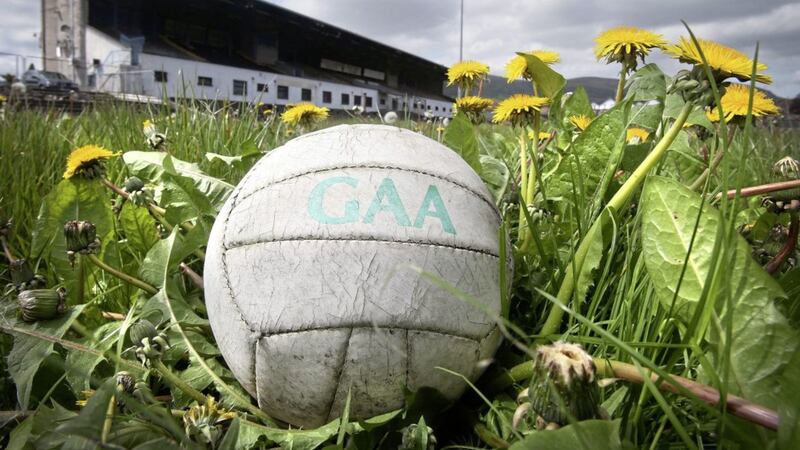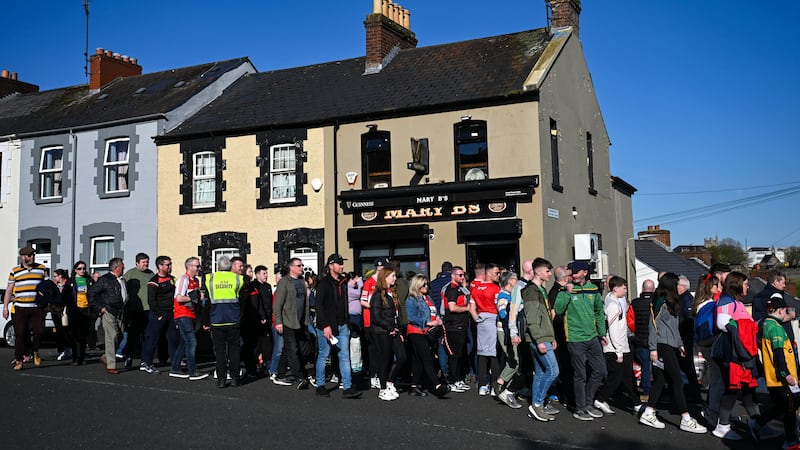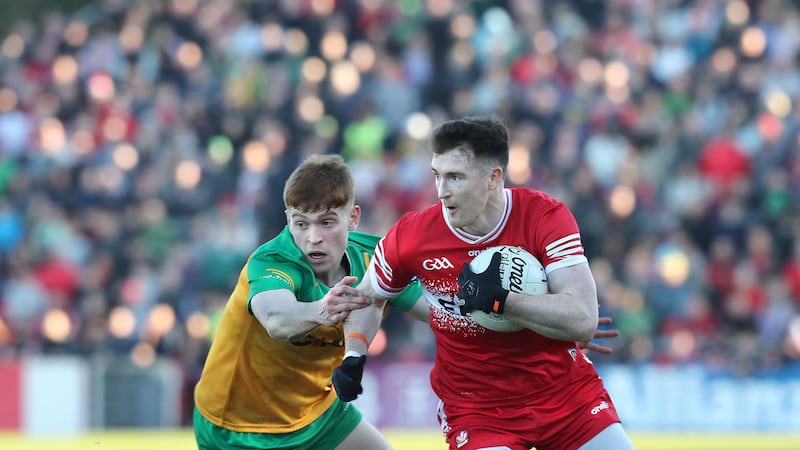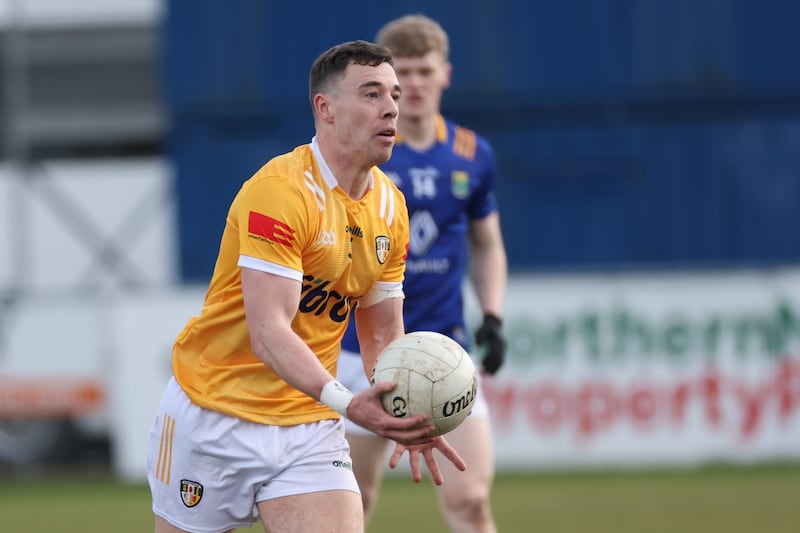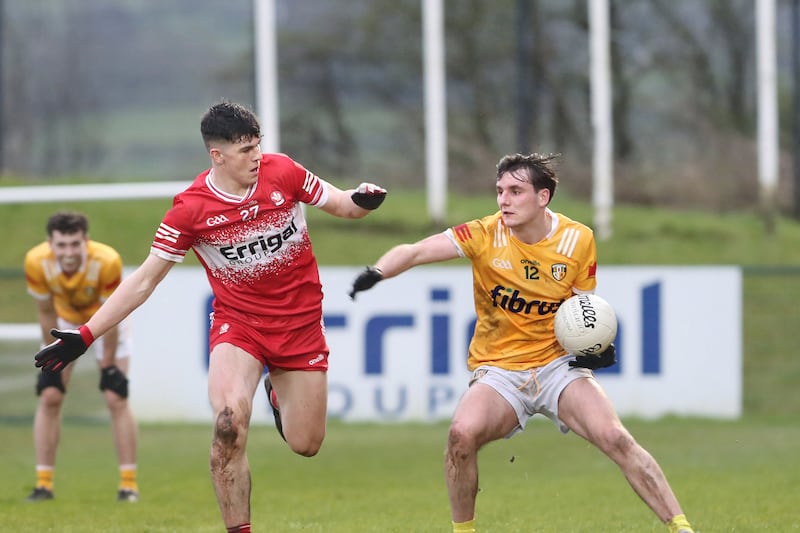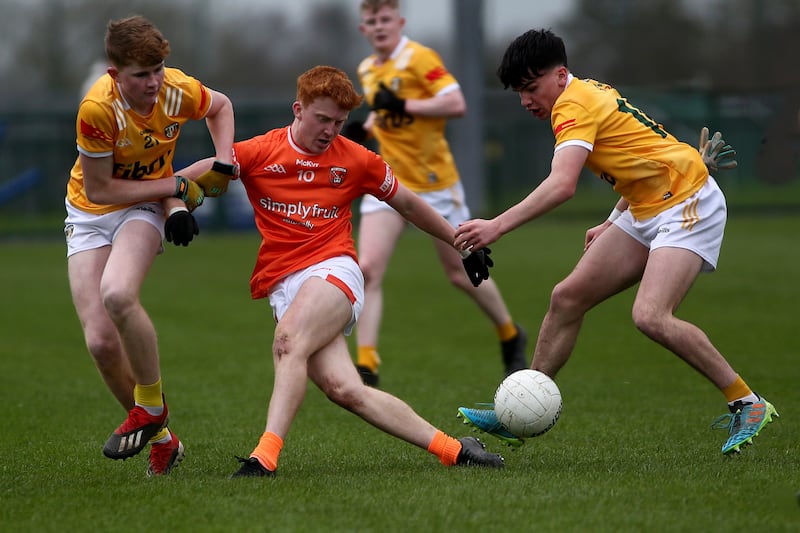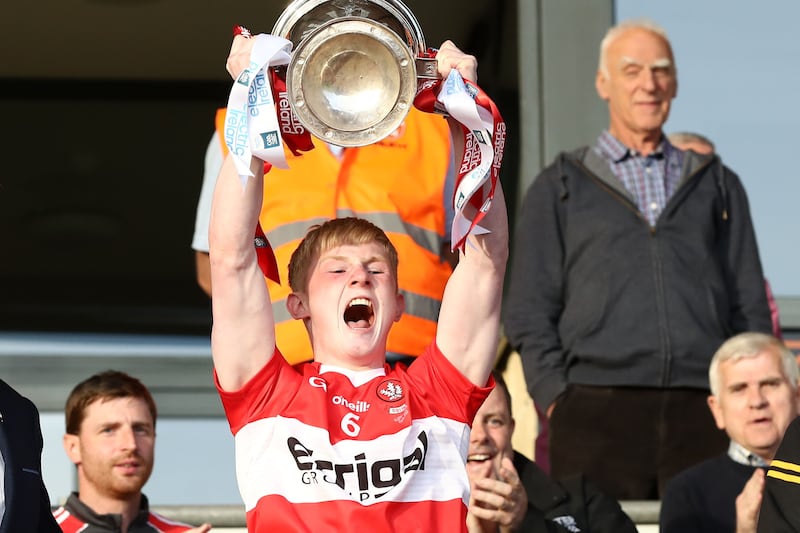REMEMBER when the GAA National Congress was something unknown? When games weren’t televised? When replica GAA jerseys weren’t for sale? And Antrim GAA was yet to come to the peak of its powers.
In my schooldays, we lived in the heart of Andersonstown in west Belfast. All the boys who lived nearby gathered at Commedagh green: Colly and Stephen Thompson, Brian McFall…. Twenty or thirty of us would meet there and play until the sun went down.
High fielding, sideline cuts, how to hook.
That’s where we learned our craft. Come Sunday, we ran down Slemish Way and into Casement Park to watch Antrim.
Sometimes, we jinked around debris from the previous night’s riots. Other days, we’d sidestep men wearing jungle camouflage and wielding combat rifles on paths outside our homes.
Later, some of the coffins carried past Casement were people we knew through sport. Their club colours were among the wreaths. And while Commedagh was our practice field, Casement was our colosseum. So, the day came when we skipped down the street wearing tracksuits and wielding hurls to play in Casement Park for our clubs and county. That was life in Ireland’s second city. Ordinary people lived through extraordinary times.
No city in Ireland, except Dublin and Cork a century ago, withstood more violence in the history of our country. Many lives were lost. Many more survived. So too did gaelic games.
Before it was locked up, Casement Park had a safety certificate for thirty-two thousand people. How often it reached capacity, I don’t know.
But I do recall thousands of people pouring through the local streets pushing through the turnstiles at Casement. It was a festive atmosphere. Commedagh green and nearby streets became a makeshift car park for people from ‘out the country’. Why then would anyone think that shrinking Casement’s capacity to less than what it was before closure would be far-sighted or acceptable?
Years have passed since the promise made by government of a new GAA provincial stadium at Casement Park. In the interim, planning permission for monster building projects by Ulster University and Translink have all been approved without fuss.
Regional stadiums have been approved and built for rugby at Ravenhill and soccer at Windsor Park. For years, Antrim Gaels have waited, patiently. But patience is not a sign of weakness or any lack of purpose. Time is up.
Gaelic games in Belfast is at a crossroads. That’s why Gaelfast came into existence. Antrim GAA always had a coaching and games branch. Financial support always came from GAA HQ; nothing like what has been pumped into Dublin for the past two decades.
But as far back as 2016, Antrim GAA knew the status quo was not an option. Gaelfast, which is an integral part of the energetic leadership of Antrim GAA, is the delivery vehicle for a change agenda.
When I was appointed as Director of Gaelfast in November 2018, it was clear from an early stage that the county and the city must grow together, not apart.
Our mission is All County, All Codes and All Communities. Gaelfast reports quarterly to a bespoke oversight body representative of county-wide, provincial and national GAA.
Our project management and reporting procedures are gold standard. Under our new WinGGs (women in gaelic games) initiative, Gaelfast is forging partnerships with Ladies Football and Camogie.
This approach to promoting All Codes is enshrined in the new 2020 Games Development Plan (GDP) authorised by Antrim GAA. Funding from GAA HQ for delivering this plan constitutes 56% of the budget Gaelfast for 2020. Over time our goal is to reduce the funding reliance on GAA HQ to 50%, with a mixed funding package which includes support from the Saffron Business Forum, Club Aontroma, businesses and public authorities.
During 2019, our first year of operation as Gaelfast, we met 86% of targets set and agreed. Our ambitions are unlimited. For example, the pilot of the new primary-school focussed GAA 5 Star Centre initiative involved 16 schools in Belfast and Antrim. It was so successful that the number of schools enrolling for 2020 has increased by more than 400%, to almost 80.
Perversely, Gaelfast’s ability to punch above our weight has led to claims we’re growing too big, too fast. I make no apology for being effective and ambitious, Belfast and Antrim have a lot of ground to make up.
Unparalleled engagement has been undertaken in this first 12 months. Stakeholder sessions across the county attracted nearly 120 representatives from local clubs.
An online Club Membership survey received almost 2,300 responses. An online Audit of needs and strengths of individual Clubs ends within days. All of this shall inform a ten year Gaelfast plan to be launched before the summer.
As days get brighter, we need more children out playing Gaelic Games. Gaelfast’s Gaelic on the Green last summer was a taste of things to come.
But GAA families also need to know they have a place in the future of this city and this society. A new stadium at Casement Park is a chance to show and prove they do. Build it now.
